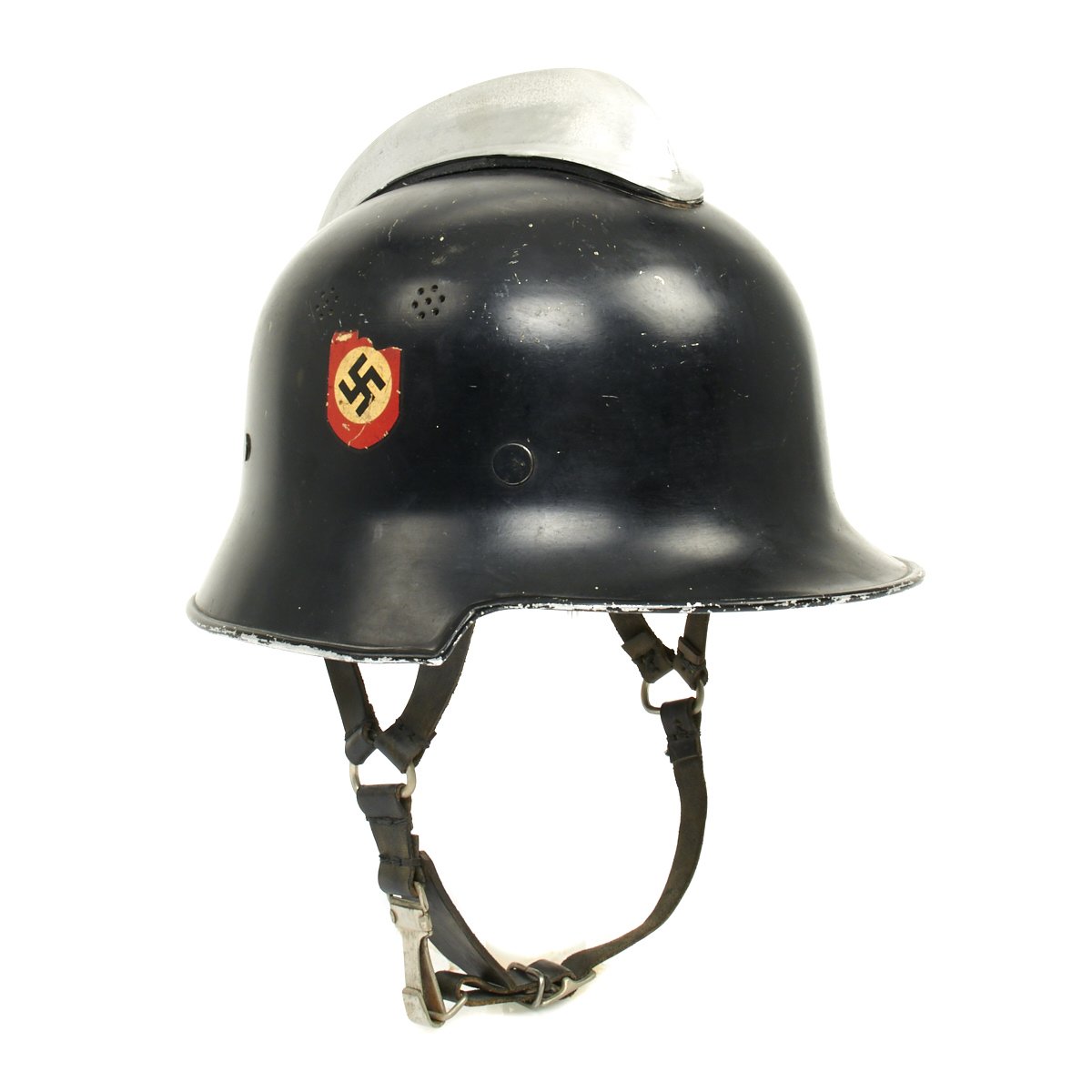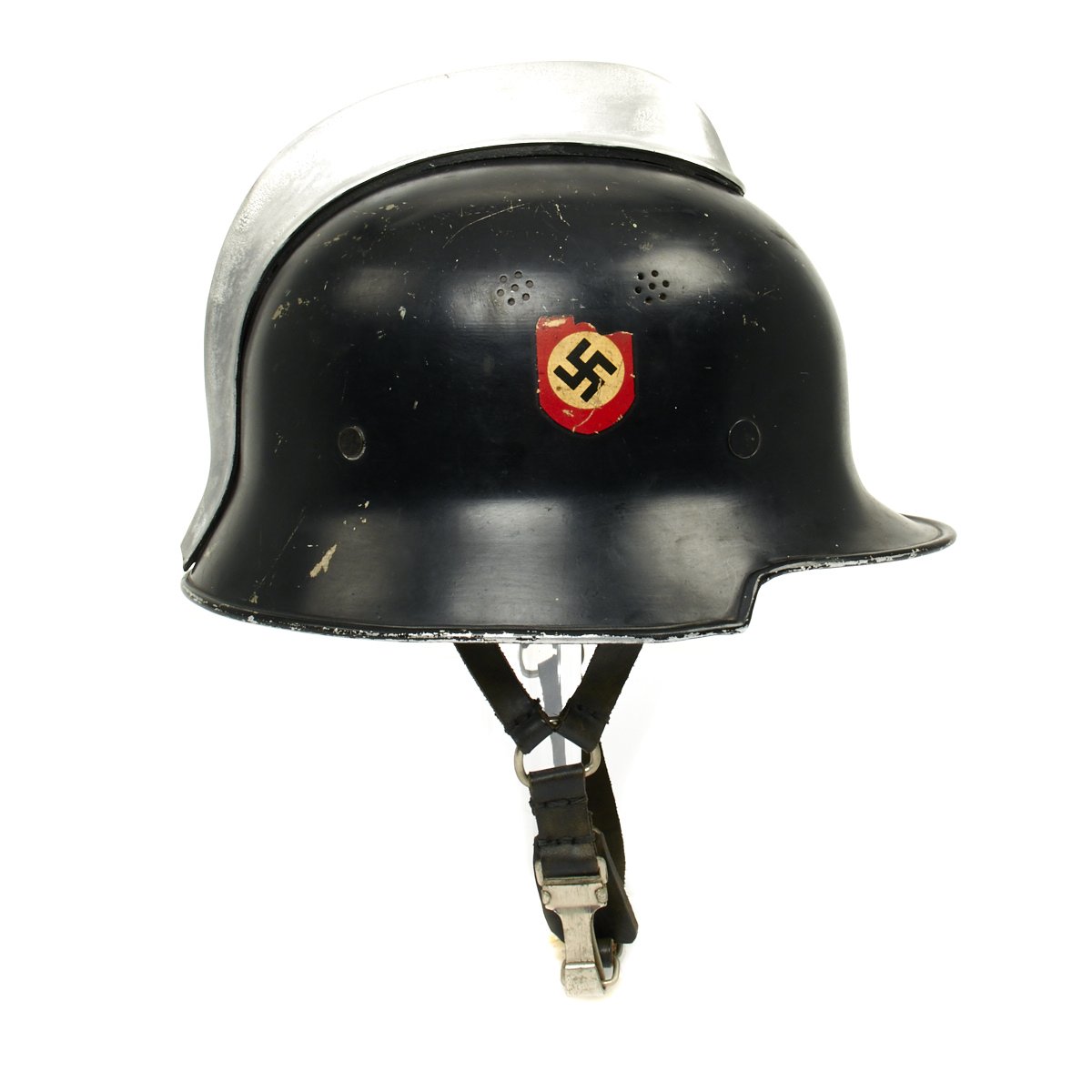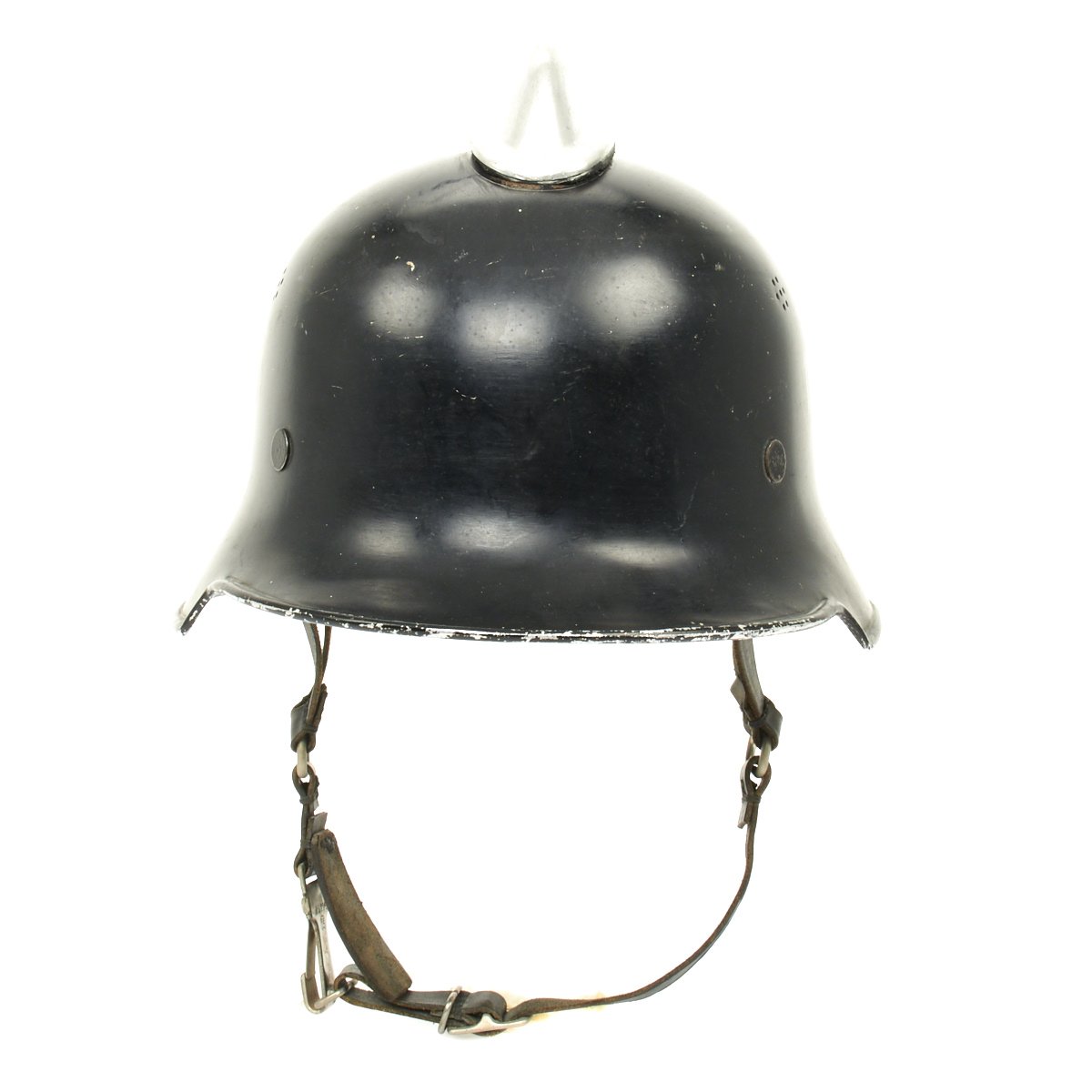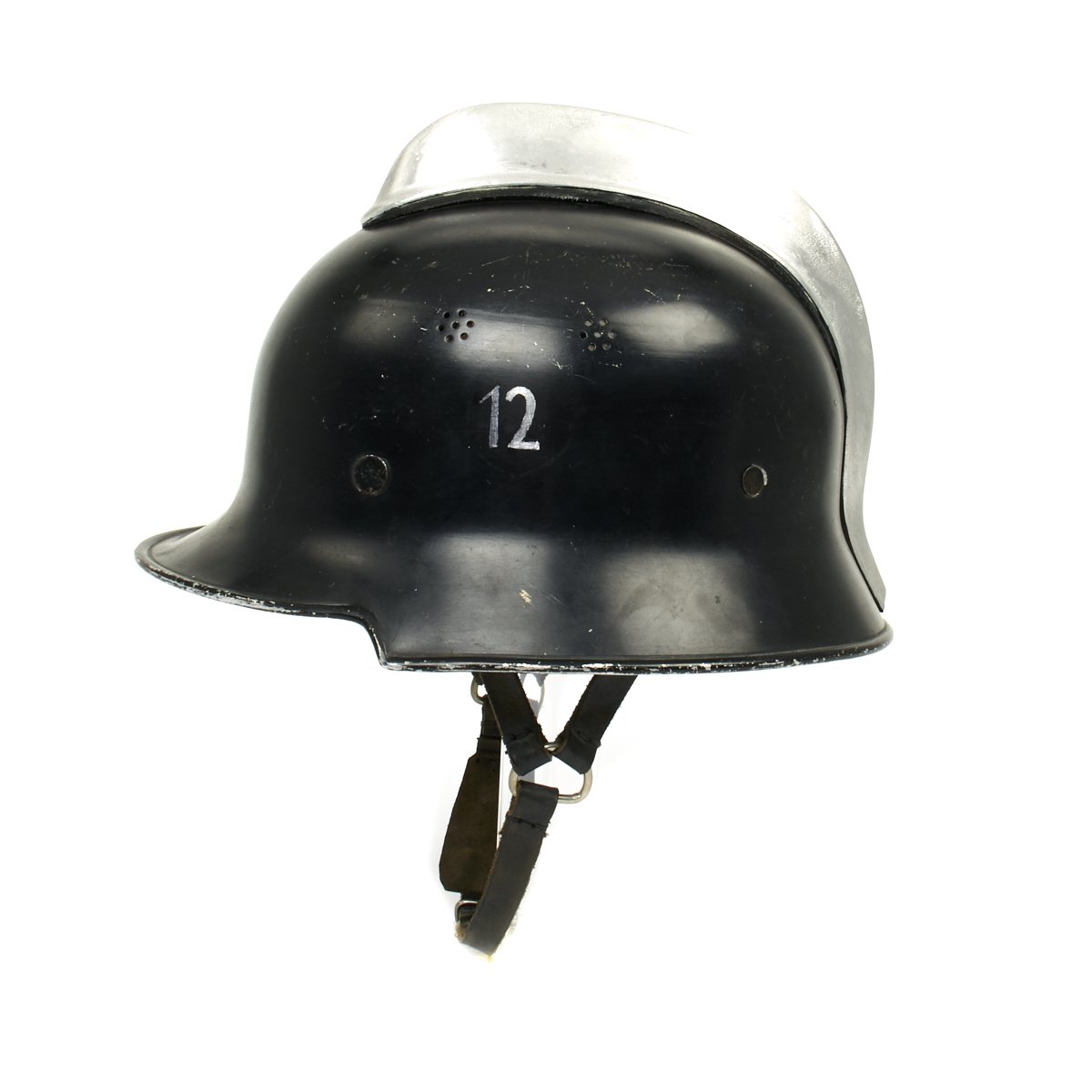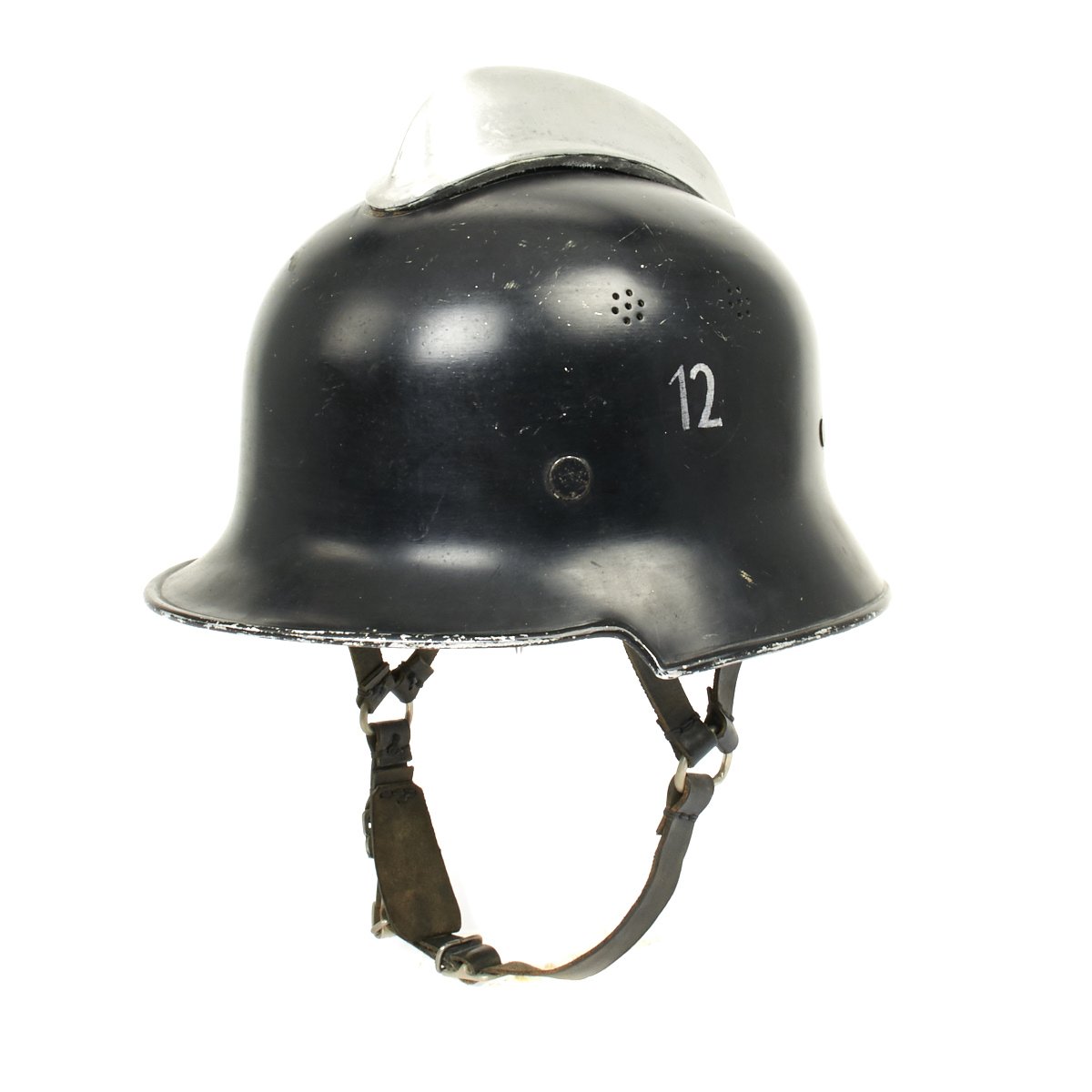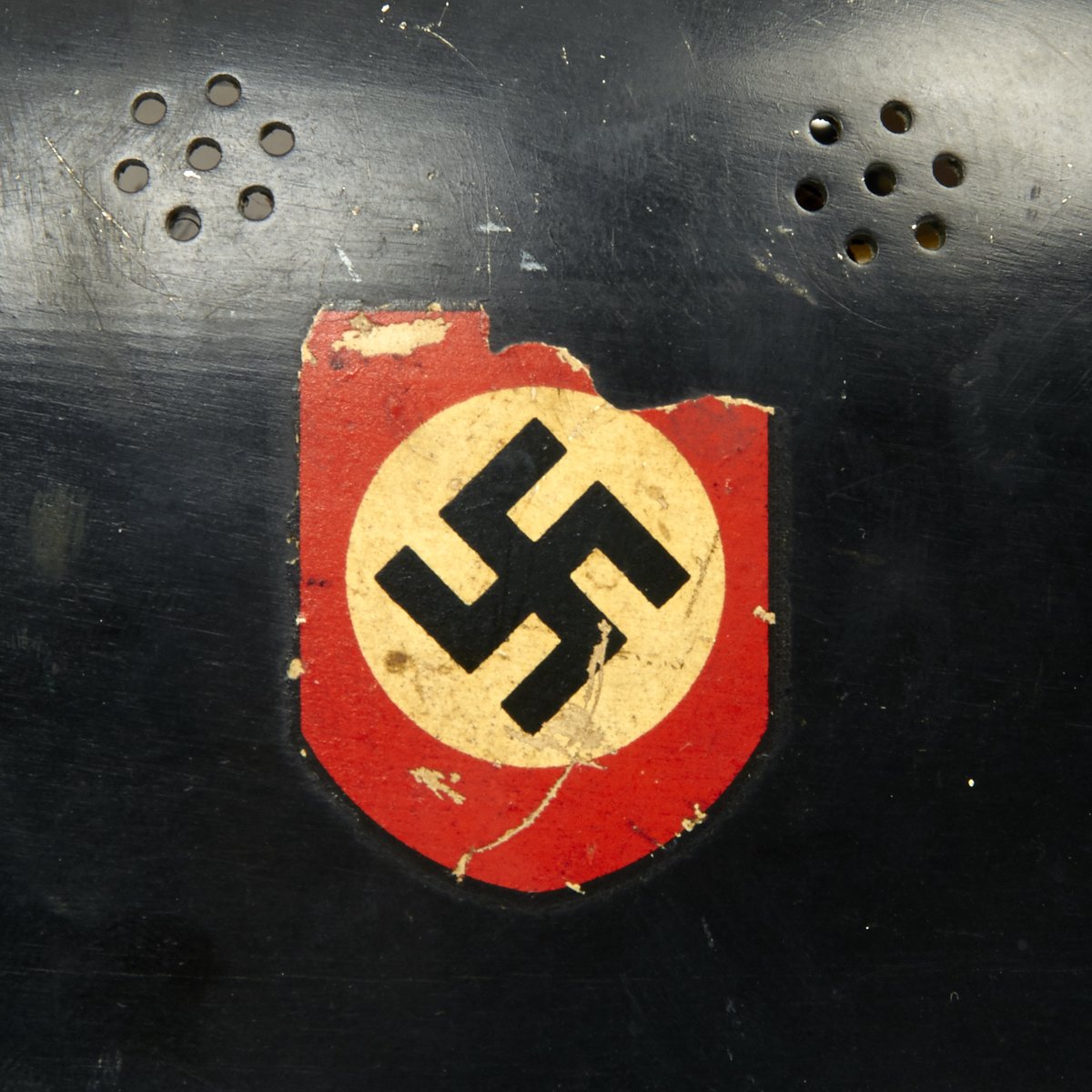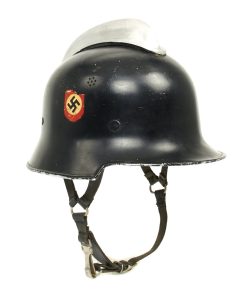Original German WWII M1934 Fire Police Helmet with Aluminum Comb by BXF – Feuerwehr Helmet Original Items
$ 350,00 $ 105,00
Original Item: Only One Available. This is a very nice example of the early “square dip” M1934 helmet with aluminum comb, made by BXF. It is complete except for the left decal, which has been removed and a number 12 scratched into the paint. The chinstrap is complete, with the original clasp. Overall condition of the shell is near excellent while the leather liner is in very good condition. A very nice example of a difficult to find early variation of the German WW2 Feuerwehr Helmet.
The inside of the back skirt is marked with the maker and pattern details:
BXF
VORSCHRIFTSMÄSSIG
LT. GESETZ 3.5.34
This means that maker BXF has made this helmet per the regulations set forth in the law passed 3.5.34. It is this marking that gave this style the nickname M-34.
Additionally, the nickel-plated clasp is marked with the RZM logo, and M5 / 27 / 6. The Reichszeugmeisterei, or RZM, was was based at the Brown house in Munich and NSDAP party headquarters in Berlin. The RZM ensured that the manufacturers of military items were consistent in design, quality of materials and other characteristics of the items. It also defined standards of design, manufacturing and quality and published an authoritative color chart for textiles. The M5 in the code stands for Uniform fittings & buttons, contractor 27 stands for firm Rittinghaus & Co. of Lüdenscheid, a city known for it’s garment fitting industry.
History of the Feuerwehr Helmet:
Prior to 1929 many fire-fighting units used leather helmets in various styles with most appearing similar to the leather spiked helmet (Pickelhaube) of World War I. These helmets bore a stamped metal crest on the front depicting the province or township to which the fire-fighting unit belonged.
In 1929 a light-weight plastic fiber (Vulkanfiber) helmet was prototyped for general use by all fire-fighting units. The first models were issued in 1932 and proved unworthy of further consideration. As a result a second prototype was explored using light-weight steel alloy known as “Edelstahl.” During this time leather fire-fighting helmets were slowly replaced with a combination of surplus World War I model steel helmets and privately manufactured versions in the “Austrian” pattern shell. These early helmets were generally painted black although some were left in their original field-gray World War I color.
In 1934 the light-weight steel alloy prototype helmet was approved for general use by all fire-fighting units. This helmet is designated the “M1934” by modern collectors because of the year of its introduction. Several different versions of the M1934 helmet exist with many variations resulting from subtle differences in the air vents or visors. The M1934 helmet was painted semi-gloss black inside and out with two insignia placed one on each side.
Fire Protection Police helmets were manufactured with and without an aluminum metal comb. In some cases the metal comb was also painted black. As a result of a large surplus, M1934 helmets without combs were issued in 1940 for general wear by all fire-fighting personnel. The helmets used typical civilian style liner systems and chinstraps. The liners were made so that they could accommodate a removable black leather neck shield.
Fast Shipping with Professional Packaging
Thanks to our longstanding association with UPS FedEx DHL, and other major international carriers, we are able to provide a range of shipping options. Our warehouse staff is expertly trained and will wrap your products according to our exact and precise specifications. Prior to shipping, your goods will be thoroughly examined and securely secured. We ship to thousands clients each day across multiple countries. This shows how we're dedicated to be the largest retailer on the internet. Warehouses and distribution centres can be located throughout Europe as well as the USA.
Note: Orders with more than one item will be assigned a processing date depending on the item.
Before shipping before shipping, we'll conduct a thorough inspection of the items you have ordered. Today, the majority of orders will be delivered within 48 hours. The delivery time will be between 3-7 days.
Returns
The stock is dynamic and we cannot completely manage it because multiple stakeholders are involved, including our factory and warehouse. So the actual stock may alter at any time. It's possible that you may not receive your order once the order has been made.
Our policy is valid for a period of 30 days. If you don't receive the product within 30 days, we are not able to issue a refund or an exchange.
You can only return an item if it is unused and in the same state as the day you received it. You must have the item in its original packaging.
Related products
Uncategorized
Uncategorized
Uncategorized
Uncategorized
Uncategorized
Uncategorized
Uncategorized
Uncategorized
Uncategorized
Uncategorized
Uncategorized
Uncategorized
Uncategorized
Uncategorized
Uncategorized
Angolan Rebel 1970s era 60mm Inert Display Mortar from Angolan Civil War Original Items
